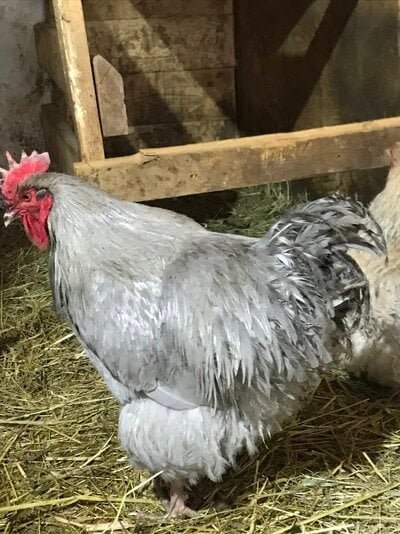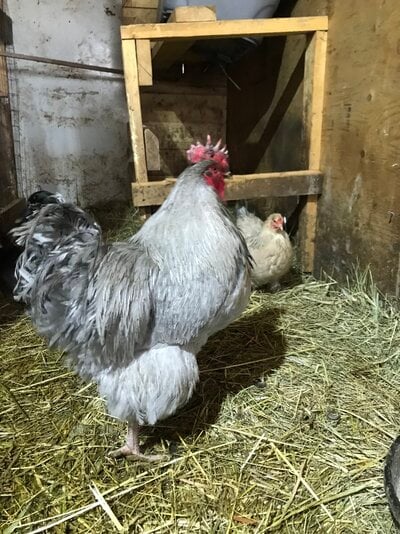Hi there,
So I’m very new to the whole concepts surrounding chicken genetics and the resulting colourations from crossing different colors. I’ve been researching and reading in every bit of spare time I can muster, and I just haven’t stumbled across something easilly digestible in regards to this pair I’ve picked up.
So background- I found a pair of Isabella Orpingtons online and travelled quite a distance to get them. When I arrived, the owner informed me that the roo had disappeared out of the outdoor run. But I could choose one of these other rooster. There stood this gargantuan blue(?) Orpington rooster. Absolutely gorgeous in my opinion. They spouted some statistics regarding the resulting offspring but at the time in my ignorance I didn’t realize how complex chicken colors can be. I didn’t know enough to pay more attention to what they were saying. They looked similar in color to me so I chose gigantor and brought them home.
But I could choose one of these other rooster. There stood this gargantuan blue(?) Orpington rooster. Absolutely gorgeous in my opinion. They spouted some statistics regarding the resulting offspring but at the time in my ignorance I didn’t realize how complex chicken colors can be. I didn’t know enough to pay more attention to what they were saying. They looked similar in color to me so I chose gigantor and brought them home.
Now I’m going -what have I done. Can anyone advise me as to what the colouration of these chicks could be. Also, I’m 99%sure he’s blue. Now I’m worried he’s actually lavender. (They had both for me to choose from) What would crosses from a lavender result in. And is there a chart or something somewhere that could help me with this kind of thing so I dont have to look like such an uninformed greenhorn online to figure out what my ignorance has boughten me.
Can anyone advise me as to what the colouration of these chicks could be. Also, I’m 99%sure he’s blue. Now I’m worried he’s actually lavender. (They had both for me to choose from) What would crosses from a lavender result in. And is there a chart or something somewhere that could help me with this kind of thing so I dont have to look like such an uninformed greenhorn online to figure out what my ignorance has boughten me.
Thankyou.
So I’m very new to the whole concepts surrounding chicken genetics and the resulting colourations from crossing different colors. I’ve been researching and reading in every bit of spare time I can muster, and I just haven’t stumbled across something easilly digestible in regards to this pair I’ve picked up.
So background- I found a pair of Isabella Orpingtons online and travelled quite a distance to get them. When I arrived, the owner informed me that the roo had disappeared out of the outdoor run.
Now I’m going -what have I done.
Thankyou.






